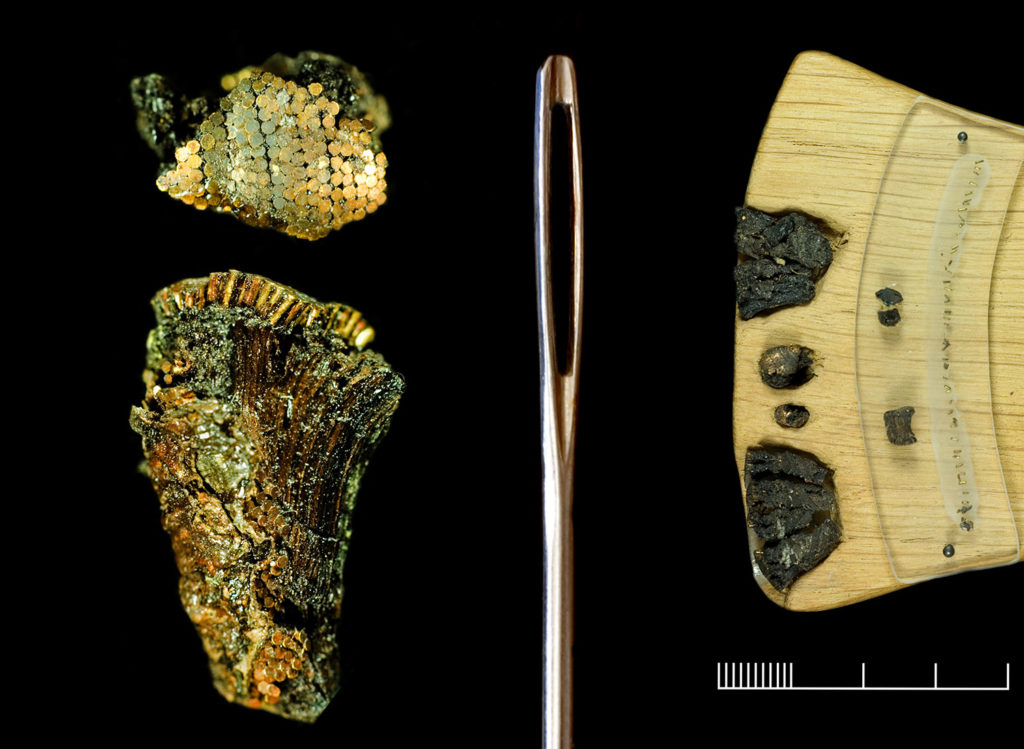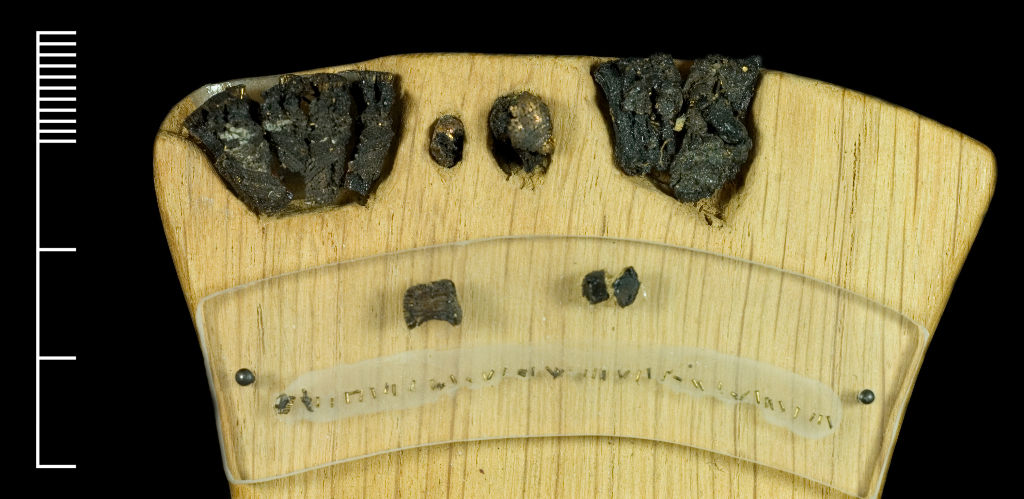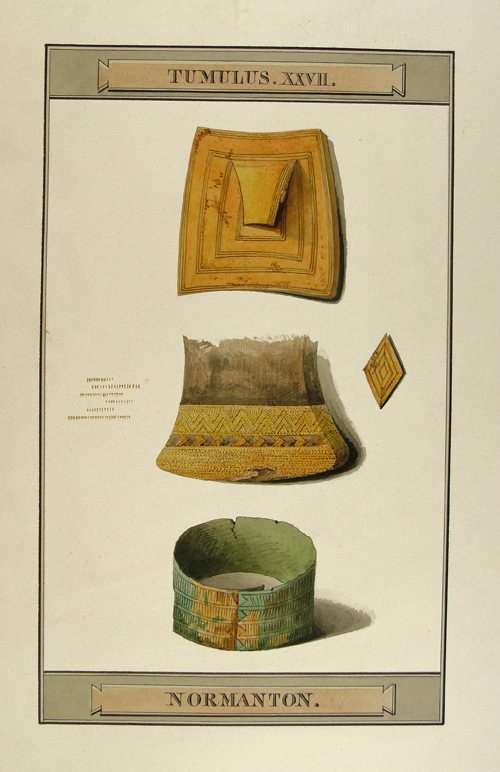The work involved such tiny components that it’s believed to have been carried out by child artisans.
Ronald B Rabbetts, author of a book called Clinical Visual Optics, wrote:
“…it is possible that Bronze Age micro-gold-working artisans may have started their careers by the age of ten. Within around five years (ie potentially by the age of around 15), many of these child artisans’ eyes would have been so affected by close-up focusing that they would have become myopic.”
Excavation of the Bush Barrow
Bush Barrow was excavated in 1808 by William Cunnington, and is one of 50 burial mounds on Normanton Down, looking out over Stonehenge. The excavation was undertaken by his two trusted workers, Stephen and John Parker, who were father and son, and their finds were illustrated by Philip Crocker. Below is part of William Cunnington’s account of the excavation, perhaps demonstrating the first use of a trowel in archaeology:




